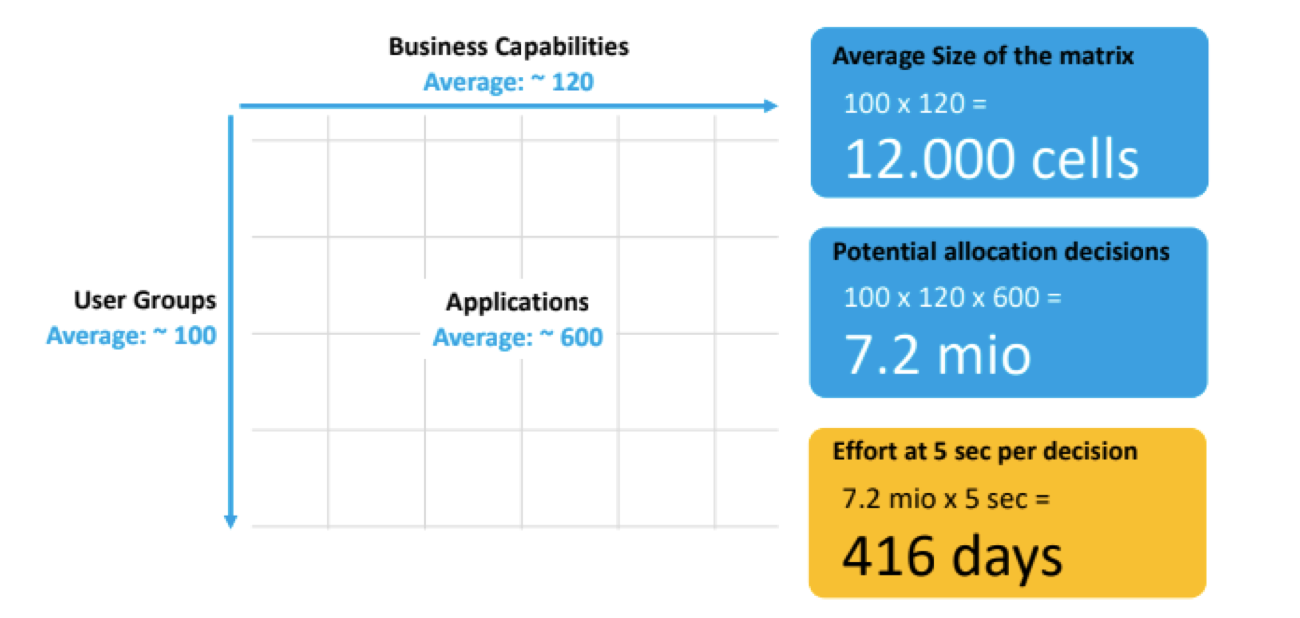
During EA Connect Day this past June in New York City, LeanIX Co-Founder and Co-CEO André Christ, shared his insights into how LeanIX is helping customers, both large and small, future-proof their IT architecture with modern Enterprise Architecture Management (EAM). LeanIX takes a holistic, visual-based approach to EAM. This means, not just looking at data from individual tables, but rather data from all objects and sources and then relating it back to the entire application landscape: how data is exchanged, what technologies are used to exchange that data, what data objects are used and stored in different applications. This is critical for organizations of all sizes - whether you’re part of an enterprise-level organization, seeking a way to see it all - and then drill down to the application level, to better clean up and reduce complexity costing them time and money to workaround, or a part of a start-up charged with fueling fast growth at scale. Yet, according to Gartner, only half of their clients successfully implemented an EA tool on their first attempt, said Samantha Searle, Senior Research Analyst at the recent Gartner Enterprise Architecture Summit in London.
CIOs are now demanding implementation of both strategic and operational IT modernization. Incomplete information, mismatched end user needs and unclear value propositions are to blame for the high rates of failed EA migration attempts, with inaccurate information being the top culprit. Data duplication, data source conflict, outdated data and data collection issues are all causes of companies working within rigid, archaic architectures, with little transparency throughout the landscape. So, what’s holding you back?
Root Cause #1: Data Remains in Siloes
Siloes are a silent bottom-line killer. Within an organization, there are not only tool siloes but organizational siloes; process boundaries that IT service management, EAs, application architects and developers refuse to cross, leading to lack of communication and exposing the business to incredible risk. If siloes are the killer, then integration is the cure. Deep, multi-platform application integration frees the organization from the burden of siloes - enabling a free-flow of data across the landscape, fostering collaboration amongst disparate business units, and uncovering areas of risk and opportunity. Keep an eye out for an upcoming post with a deep-dive on effective ServiceNow integration from a user’s perspective.
Root Cause #2: DevOps as the Change Agent
DevOps is revolutionizing the way IT builds, delivers, and manages applications. In fact, a recent survey found that 80% of organizations are planning a move to microservices. As IT prepares for the DevOps onslaught, EAs play a critical role in fostering technology and cultural change. Companies that use microservices deploy five times faster than those using traditional methods, which is a critical change for EA. Time to deployment is quick moving from months to multiple times per day. This is the service model of the future.
Root Cause #3: Staying in Manual, When You Should Be in Automatic
Like the transmission in a car, there will always be a few “loyalists” who insist on manual reporting and application maintenance, but for the vast majority of EAs, a more automated approach gives them more power, more speed, and more control. Reducing manual work and increasing data quality helps EAs move from admins to strategists. Using smart business capabilities mapping, EAs gain a clear view of their application landscape related to different business capabilities and user groups.
On average a company has around 120 business capabilities, 100 users groups, and 600 applications mapped across an inventory matrix of roughly 12,000 cells. This leads to roughly 7.2 million potential allocation decisions, that would take roughly 416 days to go through. Each time a new application is added, the possibilities would only continue to increase exponentially.

So how does LeanIX leverage the data already in the inventory and improve this process? Through the use of advanced analytics. In LeanIX, once a user types in an application, the system automatically tags it with the best matching business capability. The more associations made, the more the system learns. This not only helps ease the process but fosters users to write and craft better descriptions within the system to yield the best results. It is also worth noting that this capability is applicable for any relationship-building exercise in LeanIX, not just business capabilities and applications.
Watch André’s full EA Connect Day US presentation here.

